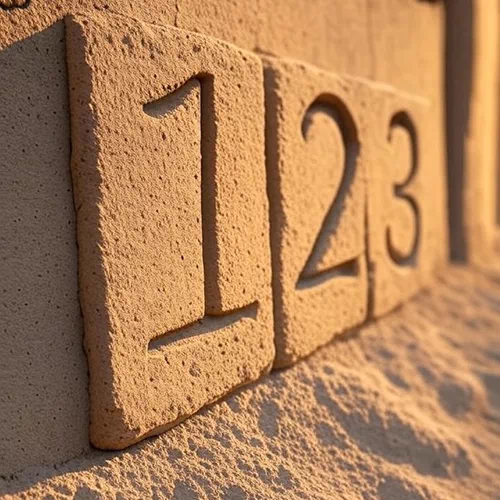
We use them every day without a second thought. They’re the foundation of our finances, our measurements, and our technology. But have you ever stopped to wonder where the numbers 0, 1, 2, 3… actually came from? The story of how we learned to count is a fascinating journey that reveals as much about human ingenuity as it does about mathematics.
The numbers we use today weren’t always the standard. Their path to becoming the global language of numbers was a long and winding one, replacing brilliant but ultimately cumbersome systems along the way.
The Mighty Roman Numerals: An Elegant but Limiting System
Perhaps the most recognizable ancient number system is the Roman one. With its majestic letters like I, V, X, L, C, D, and M, it’s a system of addition and subtraction that still adorns clocks and historical monuments today.
Roman numerals were great for recording numbers but terrible for doing math. Why? Because they lacked two critical features: place value and zero.
Imagine trying to multiply CXL by LXI. It’s an almost impossible task because the value of a symbol like ‘X’ is always 10, no matter its position. This fundamental limitation meant that for centuries, advanced mathematics remained an extremely difficult and exclusive pursuit.
The Birth of Place Value and the Revolutionary Concept of Zero
The system we use today, with its ten digits (0-9), didn’t come from Rome. It originated in ancient India and was later brought to Europe by Arab scholars, which is why it’s known as the Hindu-Arabic numeral system.
This system introduced two revolutionary ideas that changed the world:
Place Value: In our system, a digit’s position determines its value. The ‘2’ in 20 is worth ten times more than the ‘2’ in 2, and the ‘2’ in 200 is worth ten times more than the ‘2’ in 20. This simple concept makes arithmetic incredibly efficient.
The Number Zero: The concept of zero as a placeholder was a true game-changer. It allowed us to distinguish between numbers like 404 and 44, and it became the foundation for all modern mathematics, from algebra to calculus.
This new system was so elegant and practical for complex calculations that it eventually replaced the Roman system and became the global standard.
Why Our System Won
The Hindu-Arabic system triumphed because it was built for efficiency. Its combination of a limited set of symbols (just ten!) and the power of place value made it scalable and perfect for the demands of trade, science, and engineering. Other civilizations, like the Maya, also developed brilliant base-20 systems that included a symbol for zero, showing just how universal the need for these concepts was.
The next time you see a number—any number—remember its incredible history. From tally marks on bones to Roman stone carvings and the invention of zero, the journey of numbers reflects humanity’s tireless quest to understand and quantify our world.
Today, our converter is a modern-day testament to the power of this system, making it easy to convert any large, complex, place-value-based number into words flawlessly, continuing a legacy that began thousands of years ago.